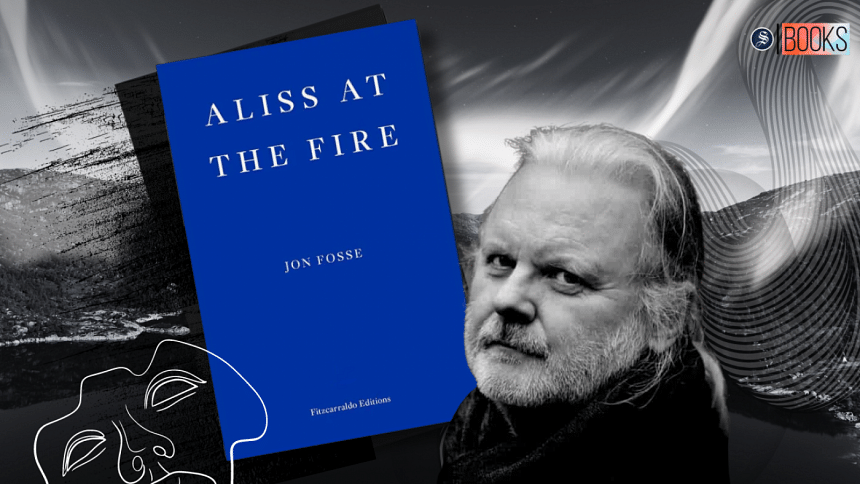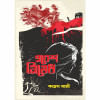Unveiling the mind’s maze: Fosse’s ‘Aliss at the Fire’

From his acclaimed 1990s debut to winning the 2023 Nobel Prize, Norwegian writer Jon Fosse has drawn praise for his spare, melancholic prose examining the quiet suffering of ordinary lives. In his haunting yet simple storytelling, he distils existential questions. Reading Aliss at the Fire, I realised there are emotions and thoughts within us transcending language—sentiments so profound they can only be felt, not spoken.
Reading Fosse, I was reminded of the solitude each of us harbours. Fosse captures those intangible emotions and thoughts that reside deep within us all—beyond the reach of language, yet universally felt.
Aliss at the Fire explores longing and loss across generations. As Signe grieves her husband Asle's disappearance into icy waters, the narrative slips into the past. Visions blur as Asle encounters his doppelgänger walking with an elderly woman years earlier. Fosse evokes a lucid dream where time folds into itself, woven together like the smoke from Aliss' Fire. Past, present, and memory entwine in this introspective tale.
The way Signe's perceptions shape her unreliable recollections of the past. It makes you think about how time can play tricks as we age. Just like Signe, the closer we get to the end, the more the past consumes us. We brood over moments, thinking, "If only this or that." A pretty profound way to show the power of memory and regret's hold over us.
Fosse employs an uninterrupted stream of consciousness with a unique disregard for conventional punctuation. The absence of full stops and the sparse use of commas and question marks reflect the unending flow of human thought. The thoughts in the book mirror the fjord's waves ebbing and flowing, almost like the pull and push of the water. It is as if the story breathes in the same rhythm as our own ruminations, with commas punctuating thoughts like heartbeats and question marks often echoing the uncertainties that lie in our own hearts.
Reading Aliss at the Fire, I was reminded that our own dialogues are often repetitions, cycles of words we repeat in hopes of understanding, of being understood, or perhaps, to simply feel.
How often have we found ourselves saying, "I don't know what I'm thinking"? Fosse translates this sentiment into a narrative that feels closer to the heart than our own pulse. It takes craftsmanship to use the repetition of words and thoughts almost like a poetic refrain. It certainly transported me right into the melancholy mood and dreary setting by the fjord.
Speaking of plays, some parts read like stage directions. For example, when I finally see a significant drowning scene, the entire gradual tragedy unfolds in chilling detail over a whole page. I could picture exactly how the treacherous water lured him in further and further till it was too late. The images stick with you.
Fosse's continuing the whole book just with "and-then" is not mere redundancy, it is an emphasis, a deepening of meaning, much like the refrains in music or poetry. The narrative pulls us into its rhythm, making us part of Signe's world, where every day is a repetition of the last, and every memory is a recollection of what has been lost.
I'll admit, when I started reading Aliss at the Fire, I was a bit confused and almost put the book down. But then, something clicked around the halfway point. I realised Fosse was using his unusual writing style to explore complex ideas about grief and isolation. And I have to say, it was brilliant!
He shows how people process trauma in different ways—not just saying "she was sad" but layering on these repetitive scenes and motifs to showcase the looping, wave-like nature of pain. And the way he uses one symbol again and again, even across one person's life, is illuminating. One such motif is the window, which appears during Signe's moments of acute grief over her husband's disappearance. The window represents her disconnection to reality and inability to move forward, with each appearance of the window evoking this trauma anew.
I'd say be patient with this unusual book, and you'll be rewarded. Fosse finds genuinely unique ways to showcase the intricate pain of the human condition.
I wholeheartedly recommend Aliss at the Fire because, after reading this book, I am confident that I will never again say, "I don't know what I am thinking." Fosse taught me that it's okay to express my thoughts, even if they seem formless at first. In the end, they find their meaning, resonating deeply within. This book is one that will stay in my heart as deep and vast as the fjord that frames its narrative.
Lamia Sultana Kakon is a fiction writer, poet, and translator. She is studying for an MA in English Literature at the Independent University, Bangladesh. Reach her at: [email protected].

 For all latest news, follow The Daily Star's Google News channel.
For all latest news, follow The Daily Star's Google News channel. 










Comments